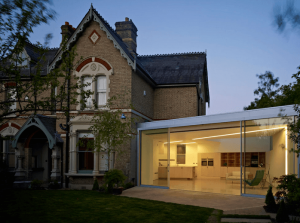Everyone wants their home to be a place they can relax and enjoy spending their time. However, a number of things can make it less than comfortable. One of the major ones is noise. It could be sounds from outside filtering in or activities in another part of the property. Either way, it can be annoying and stressful. What you may want to look at is how to achieve acoustic comfort. We can help with this, whether it is residential architecture in London or elsewhere.
Location
 One of the major causes of noise and acoustic issues is the location. Your home may be in a busy urban setting or close to a main road. Even if the house is in a rural setting with very little traffic, there can still be distracting noises.
One of the major causes of noise and acoustic issues is the location. Your home may be in a busy urban setting or close to a main road. Even if the house is in a rural setting with very little traffic, there can still be distracting noises.
The best thing to do is block noises from entering the property. There are a number of things you can do here. For example, you could have things like trees and hedges to dampen the sound. Or you could have physical barriers like fences or walls. You can also carefully select materials for the building that can block noise. You should look at the mass, density, and volume. This can provide better sound insulation.
Noise propagation
Modern homes tend to be much noisier than they were in the past, especially residential architecture in London and other busy areas. Part of this comes down to our tech. Homes are more full of it than ever before, including cinema size TVs, soundbars, gaming consoles, and more. People also work from home more often now. Sadly, if you don’t think about acoustic comfort it can mean the noises from tech and other activities travel throughout the property.
The thing to do to tackle noise propagation is to use isolating and absorbing materials. They can work together to limit sound to particular areas, ensuring it doesn’t spread through a property.
What you need to do to get the best results is focus on acoustic comfort. You can do this by thinking about the specific applications and uses of spaces. Then, you can look at construction techniques, architecture, and materials. What you may want to do is create an acoustic plan as well as architectural drawings.
Materials to consider
There are a number of great materials you can use to make homes better acoustically, whether you are thinking about residential architecture in London or other areas. Wood is a fantastic option because it naturally absorbs some of the sound. You can go a step further here by choosing panels with slats or indents to reduce noise even more; they won’t reflect as much sound as smooth panels.
Cork is derived from wood but has even better acoustic advantages thanks to the density and honeycomb structure. It can absorb a lot of sound and you can easily create panels to block noise. It also helps that it is very light. Whether you choose it as insulation or for finishing surfaces, it can work really well.
Composite walls are a really great idea here. What you have is a core of insulating material between two outer layers of material, typically masonry, plasterboard, or cladding. You can use them to block external noise and isolate interior noise. You can create really good enclosures for the noisiest spaces.
Speak to us about residential architecture in London
If you want to maximise acoustic comfort in your home, we would love to help. We can consider a huge array of factors, including internal and external ones. Plus, we can look at the setting to see how we can address noise.
So, get in touch and we’ll work with you to create the best residential architecture in London. It will ensure the home is quieter and more comfortable.
